Explore Bumthang - Bhutan Travel, Asia
Bumthang, often referred to as the spiritual heartland of Bhutan, is a hidden gem nestled in the heart of the Himalayas. Located in central Bhutan, Bumthang is easily accessible from major cities like Thimphu and Paro, making it a must-visit destination for anyone exploring the kingdom. As one of the country’s oldest inhabited regions, Bumthang is a living testament to Bhutan’s cultural evolution, offering a window into its sacred past and vibrant present. This region is divided into four scenic valleys—Chokhor, Tang, Ura, and Chumey—each offering unique experiences, from exploring ancient temples to trekking through pristine nature.
Population: Approximately 18,000 in 2017.
Economy: Bumthang's economy is largely driven by agriculture, with buckwheat, dairy products, and honey as key outputs. Tourism and traditional crafts like Yathra weaving also play a vital role in local livelihoods.
Landmarks: Famous for the Jakar Dzong, Kurje Lhakhang, and the Jambay Lhakhang.
Bhutan
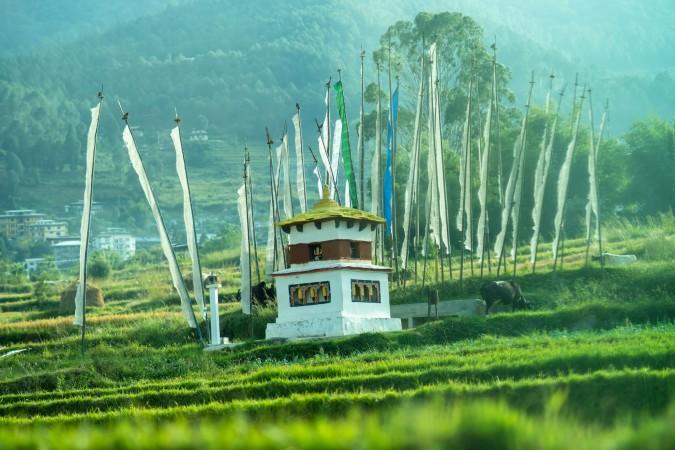
Overview of Bumthang
History & Cultural Influence
This region is where Bhutan’s spiritual foundation was laid by Guru Rinpoche, who is said to have introduced Buddhism to Bhutan, and in many of its ancient fortresses and temples. His influence is still deeply felt today in Bumthang, where many of the country’s oldest monasteries stand as silent witnesses to centuries of devotion and faith. The local folklore, closely tied to the region's religious roots, also adds another layer of cultural richness. Legend has it that Bumthang’s valleys were once inhabited by spirits, and many festivals celebrate these tales with elaborate dances and rituals.
Interaction with the Locals
Bumthang is home to a relatively small population, with most residents are Bhutanese people of the Ngalop ethnic group, who primarily practice Buddhism and maintain strong cultural traditions. Bumthang’s citizens are known for their warm hospitality and deep connection to their spiritual and ancestral heritage, with many involved in farming, traditional crafts like Yathra weaving, and religious practices. Despite modernization, the people of Bumthang continue to lead a peaceful, community-centered lifestyle, deeply rooted in Bhutanese values and customs.

A town in Bumthang District - © Prateek Katyal
Top Attractions in Bumthang
Bumthang is home to some of Bhutan’s most iconic and spiritually significant sites, making it a key destination for anyone seeking to understand the depth of Bhutanese culture. Whether you're a history buff, spiritual seeker, or adventure traveler, Bumthang offers a wealth of experiences.
Jakar Dzong
Perched high on a ridge, Jakar Dzong, known as the “Castle of the White Bird,” is a fortress with an impressive history that overlooks the Chokhor Valley and was built in the 17th century. Visitors can explore its vast courtyard and take in stunning views of the surrounding valley. The dzong still functions as the administrative center of the region and houses the local monastic body.
Kurje Lhakhang
Kurje Lhakhang is one among the holiest temples in Bhutan. It marks the site where Guru Rinpoche meditated and left his body imprint, a revered symbol of his presence in Bhutan. The temple complex consists of three temples, each representing a distinct time of Bhutanese history. Walking through Kurje Lhakhang offers a deep spiritual experience, connecting visitors to Bhutan’s religious heritage.
Jambay Lhakhang
Built in the 7th century by Tibetan King Songtsen Gampo, Jambay Lhakhang is one of Bhutan’s oldest temples. It is said to be one of 108 temples constructed across the Himalayas to subdue a demoness who was obstructing the spread of Buddhism. Every year, the temple celebrates the Jambay Lhakhang Drup festival, which features sacred dances and fire rituals to bring ancient legends to life.
Mebar Tsho (Burning Lake)
Mebar Tsho is a sacred lake in the Tang Valley that holds spiritual importance to the people of Bhutan. According to legend, the great Buddhist treasure discoverer Pema Lingpa found many hidden religious treasures in this lake. Visitors often light butter lamps here and offer prayers, while marveling at the serene, mystical beauty of the site.
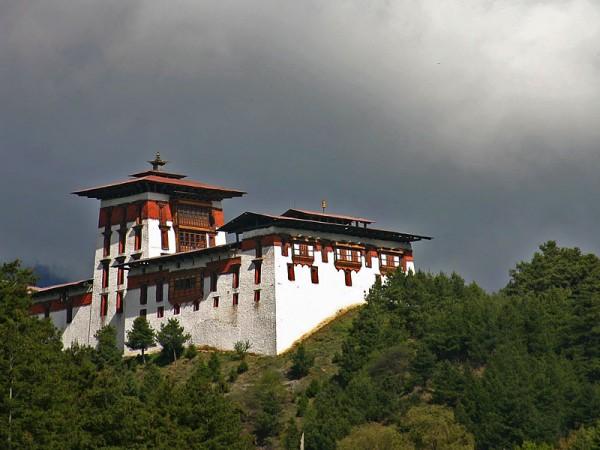
Jakar Dzong - © Wikipedia
Must-Try Local Dishes
Bumthang offers a rich culinary experience that reflects the region’s agricultural roots and Bhutan’s love for simple, flavorful, and nutritious food. Many dishes are made from locally sourced ingredients, including buckwheat, dairy products, and organic vegetables.
- Ema Datshi: As Bhutan’s national dish, Ema Datshi is a must-try for every traveler. Made from green chili peppers and soft local cheese, this spicy and creamy dish is served with red rice or buckwheat pancakes. Despite its heat, the comforting flavor makes it a favorite among locals and tourists alike.
- Puta: Bumthang is known for its buckwheat production, and Puta—traditional buckwheat noodles—showcases this ingredient beautifully. Puta is typically boiled and stir-fried with light spices, giving it a wholesome and earthy flavor that pairs well with meat or vegetarian dishes.
- Jasha Maroo: If you’re in the mood for something heartier, Jasha Maroo is a flavorful chicken stew that’s a staple in many local households. It’s cooked with tomatoes, onions, garlic, and ginger, creating a rich broth that’s mildly spicy and packed with flavor.
- Suja: Suja, or butter tea, is a traditional drink offered during special occasions, but it’s also enjoyed as an everyday beverage in Bumthang. This salty, creamy tea made from butter and tea leaves is an acquired taste but gives you a unique insight into Bhutanese daily life.
- Zow Shungo: Zow Shungo, a dish fashioned from leftover rice and vegetables, is a good example of local innovation in waste minimization. a humble but delicious meal that reflects the resourcefulness and sustainable lifestyle of Bumthang’s residents.

Jasha Maroo - © Jess Eats and Travels ( @christy blanch)
Festivals & Local Celebrations
Festivals in Bumthang are not only spiritual in nature but also serve as vibrant social gatherings where families and communities come together to celebrate. Travelers visiting during these festivals can expect to see Bhutanese culture at its most lively and colorful.
Jambay Lhakhang Drup
Jambay Lhakhang Drup is one of the most well-known events in Bumthang, taking place every autumn. It takes place at Jambay Lhakhang, a 7th-century temple, and is celebrated with a series of sacred mask dances, fire rituals, and processions. The highlight of the festival is the Mewang ceremony, a fire dance performed to bless the community and protect them from evil.
Tamshing Phala Choepa
Tamshing Phala Choepa is another significant religious feast in Bumthang, taking place at Tamshing Lhakhang, one of the area's most notable monasteries. During this festival, monks perform ancient sacred dances to invoke blessings for peace and prosperity. Visitors can witness Bhutanese monks and laypeople come together in a vibrant display of devotion and tradition.
Ura Yak Choe
Held in the picturesque Ura Valley, Ura Yak Choe is a unique festival known for its spiritual dance performances and rituals. A sacred relic is brought out during the festival, and local villagers participate in prayers and offerings, making it a deeply spiritual experience for both participants and observers.
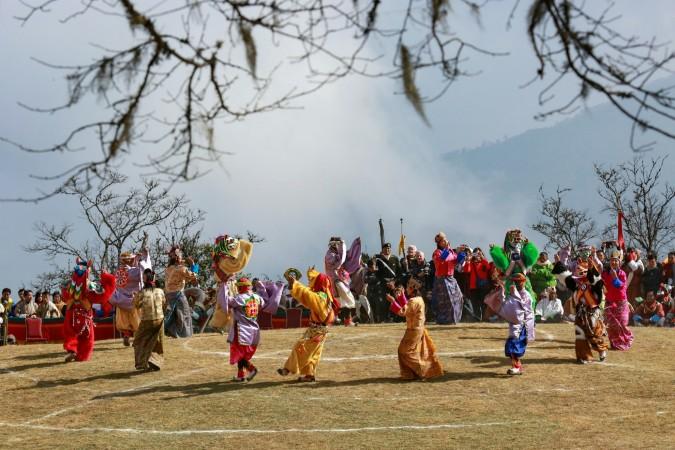
Jambay Lhakhang Drupv - © Pema Gyamtsho
What to Do in Bumthang
- Trekking in Bumthang: Bumthang’s stunning terrain creates many wonderful trekking trails. Popular trails like the Bumthang Owl Trek and the Ura Valley Trek offer panoramic views of the Himalayan landscape, passing through forests, villages, and ancient monasteries.
- Cultural Tours: For those interested in Bhutan’s spiritual and cultural heritage, guided tours of Bumthang’s famous monasteries, Dzongs, and temples offer a rich learning experience. Visits to places like Kurje Lhakhang, Jakar Dzong, and Tamshing Lhakhang provide deeper insight into the region’s history and its central role in Bhutanese Buddhism.
- Wildlife Spotting: Nature lovers will enjoy the chance to spot some of Bhutan’s rare wildlife in the forests surrounding Bumthang. The region is home to species like the Himalayan black bear, red panda, and a variety of bird species, making it a great destination for eco-tourists and wildlife enthusiasts.
- Traditional Handicraft Workshops: Bumthang is known for its traditional crafts, particularly Yathra weaving. Visitors can tour weaving centers in the Chumey Valley, where they can watch artisans create intricate textiles using traditional methods.
Shopping in Bumthang
- Handicrafts Stores: Bumthang is a great place to buy authentic Bhutanese handicrafts, including hand-woven textiles, wood carvings, and pottery. These items are often crafted using techniques passed down through generations, making them valuable not just as souvenirs but also as pieces of Bhutanese history and culture.
- Yathra Product Shops: The Chumey Valley is famous for Yathra weaving, a traditional craft that produces vibrant, patterned textiles from sheep and yak wool. These textiles are used to make scarves, bags, jackets, and blankets, which are sold in local shops and markets.
- Bumthang Honey and Cheese Stores: In addition to handicrafts, Bumthang is well-known for its honey and cheese products. These items are sold in small markets and are great to take home as edible souvenirs that offer a literal taste of Bhutan’s rich agricultural tradition.
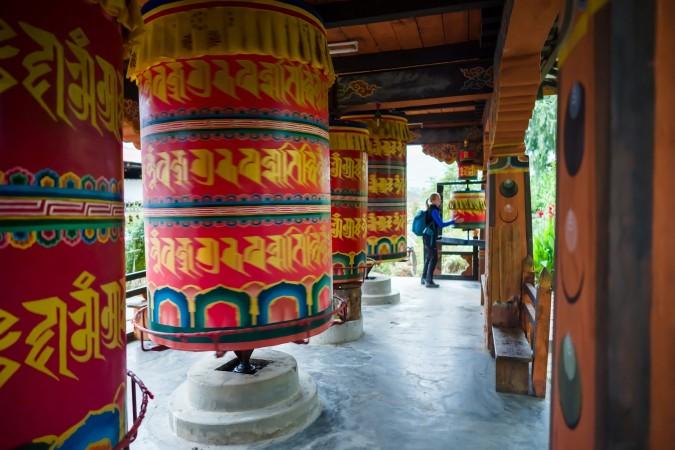
Visit various Dzongs anđ temples in Bumthang - © Raimond Klavins
Weather in Bumthang: Best Time to Visit
Bumthang has a cool, moderate climate, making it a comfortable place to visit for the majority of the year. Its higher elevation and location in central Bhutan contribute to distinct seasons, each offering a unique experience for travelers.
Spring in Bumthang
Bumthang during spring is one of the most beautiful times to visit as the valleys burst into bloom with colorful wildflowers, and the weather is mild and refreshing, making it ideal for trekking and outdoor exploration. Daytime temperatures range from 10°C to 20°C (50°F to 68°F), while dropping significantly during the night.
Summer in Bumthang
The summer months bring monsoon rains, with heavy showers occurring mostly in July and August. While the landscape is lush and green during this time, the rain can make trekking and outdoor activities more challenging. However, for those seeking solitude and fewer tourists, summer can still be a rewarding time to visit, with temperatures ranging from 15°C to 25°C (59°F to 77°F).
Autumn in Bumthang
Autumn is perhaps the best time to visit Bumthang as the weather is clear and crisp, offering stunning views of the surrounding mountains. Temperatures are comfortable during the day, averaging between 10°C to 20°C (50°F to 68°F), while nights can be cold. This is also the time when many of Bumthang’s festivals take place, making it a culturally rich season to explore.
Winter in Bumthang
Winters in Bumthang can be harsh, with temperatures plunging below freezing at night. Snowfall is common in higher elevations, and while the cold weather might deter some visitors, the serene beauty of the snow-covered valleys offers a magical experience. Daytime temperatures range from -5°C to 10°C (23°F to 50°F). Winter is a great time to experience local life without the crowds.
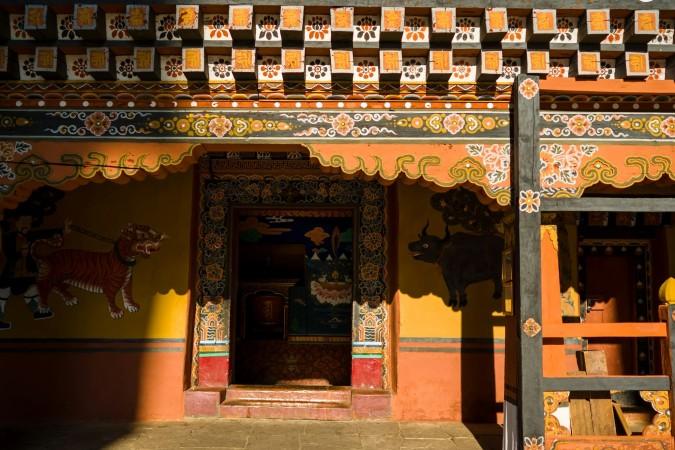
Explore the cultural beauty of Bumthang and Bhutan - © Raimond Klavins
Essential Travel Information
Getting Around Bumthang
- Taxis: You can easily find taxis in Jakar, the main town, and hire them for short trips or even for full-day tours to visit various monasteries, Dzongs, and valleys. It's a flexible option, and fares are generally reasonable, though it's a good idea to negotiate the price before your journey begins.
- Cycling: For the more adventurous, cycling is an eco-friendly way to explore Bumthang’s picturesque landscape. Several guesthouses and local providers offer bicycles for rent. The region’s valleys and rural roads provide a scenic backdrop for cycling, and it's a great way to experience Bumthang’s beauty up close.
- Walking: Bumthang’s compact size and scenic surroundings make walking a pleasant way to explore the area. Many of the monasteries, temples, and Dzongs are within walking distance of Jakar town. Walking also allows you to immerse yourself in the local culture and enjoy the peaceful countryside at a leisurely pace.
ATM & Banking Services
In Bumthang, banking and ATM services are somewhat limited compared to Bhutan's larger towns, so it's important to plan ahead. ATMs are available in the main town of Jakar, but they can sometimes be unreliable due to connectivity issues. It's advisable to carry enough cash, especially if you plan to visit rural areas or smaller villages where card payments are rarely accepted. Currency exchange facilities are also available, but rates and availability may vary, so exchanging money in larger cities before arriving in Bumthang is recommended.
Where to Stay in Bumthang
- Hotels and Resorts: For those looking for a more upscale experience, Bumthang has several luxury hotels and resorts that provide modern amenities, such as spacious rooms, fine dining, and stunning views of the surrounding valleys. These properties often blend traditional Bhutanese architecture with modern comfort, offering an ideal retreat after a day of exploring.
- Homestays: If you're looking to experience the local way of life, homestays in Bumthang offer a unique opportunity to live with a Bhutanese family. These stays provide a glimpse into everyday life in the region, with home-cooked meals and the chance to learn more about local customs and traditions. It's a wonderful way to connect with the culture while enjoying the warmth of Bhutanese hospitality.
- Camping: For adventurous travelers, camping is another option in Bumthang’s scenic valleys. Some trekking tours offer camping as part of the experience, allowing you to sleep under the stars surrounded by the stunning Himalayan landscape. It’s a great way to enjoy the outdoors and immerse yourself in nature.
Articles for you

Explore Yala National Park - Sri Lanka Travel, Asia
Tucked away in Sri Lanka’s southeastern corner, Yala National Park is where wild nature meets deep tradition. Known worldwide for its leopard population, the park is also home to elephants, sloth bears, crocodiles, and hundreds of bird species. Beyond wildlife, Yala opens doors to a cultural landscape dotted with ancient temples, Buddhist ruins, and coastal villages. For travelers seeking more than just a safari, Yala offers a chance to explore eco-tourism, local communities, and sacred heritage sites.
Population: The Yala National Park area doesn’t have a human population.
Economy: The economy around Yala National Park thrives on a blend of eco-tourism, agriculture, and local services. Safari tours, eco-lodges, and cultural experiences drive steady income for nearby towns like Tissamaharama and Kataragama, supporting thousands of families.
Landmarks: Famous for Block I of Yala and wildlife encounters, including elephants, sloth bears, crocodiles, and exotic bird species.

Explore Galle - Sri Lanka Travel, Asia
Nestled on Sri Lanka’s southern coastline, Galle is a vibrant city where history meets the sea. Its cobbled streets, colonial architecture, and serene beaches make it a must-visit destination for travelers seeking a blend of culture, adventure, and relaxation. A UNESCO World Heritage site, Galle captivates visitors with its Dutch Fort, bustling markets, and friendly locals. Whether you’re exploring the ramparts at sunset or savoring fresh seafood by the shore, Galle promises an unforgettable journey into Sri Lanka’s heritage.
Population: Approximately 113,000 in 2023.
Economy: Galle’s economy thrives on tourism, trade, and fisheries. The city’s historic fort, colonial architecture, and coastal charm draw thousands of international visitors each year, making tourism its main economic driver. Fishing remains vital for local livelihoods, supplying fresh seafood across the region.
Landmarks: Famous for the Galle Fort, Dutch Reformed Church & Maritime Museum, and Unawatuna Beach.

Explore Bentota - Sri Lanka Travel, Asia
Nestled along Sri Lanka’s southwestern coast, Bentota is a tropical paradise that blends golden beaches, vibrant culture, and thrilling adventures. Famous for its calm waters, luxury resorts, and scenic river estuary, Bentota has become a top destination for travelers seeking both relaxation and authentic experiences. From serene beach walks at sunrise to adrenaline-pumping water sports, this coastal town offers a perfect balance of leisure and exploration. With its proximity to Colombo and Galle, Bentota is easy to reach, making it an ideal stop for both short escapes and extended holidays.
Population: Approximately 37,000 in 2023.
Economy: Bentota’s economy thrives mainly on tourism, which drives local businesses such as hotels, restaurants, and wellness retreats. The town also benefits from fishing, coconut cultivation, and handicrafts like wood carving and batik textiles. Many residents rely on the growing demand for water sports and Ayurvedic treatments, making tourism the backbone of both income and employment in the area.
Landmarks: Famous for Bentota Beach, Bentota River Safari, and Kande Vihara Temple.

Explore Mirissa - Sri Lanka Travel, Asia
Mirissa is a charming coastal town on Sri Lanka’s southern shoreline. Known for its golden beaches, turquoise waters, and vibrant marine life, it has become a must-visit stop for travelers exploring the island. Many come for whale watching, surfing, and sunset views at Coconut Tree Hill, but Mirissa offers much more than postcard beauty. The fishing boats you see anchored by the bay carry generations of stories. Local traditions, delicious cuisine, and a laid-back rhythm of life shape every visitor’s experience.
Population: Approximately 4,700 in 2023.
Economy: Mirissa’s economy is largely shaped by its coastal location. Fishing has long been the backbone of local livelihoods, with generations relying on the Indian Ocean for income. In recent decades, tourism has become the main driver of growth, thanks to whale watching, surfing, and beachside hospitality.
Landmarks: Famous for Mirissa Beach, Coconut Tree Hill, and Parrot Rock Bridge.

Explore Nuwara Eliya - Sri Lanka Travel, Asia
Tucked away in the Central Highlands of Sri Lanka, Nuwara Eliya is often called “Little England”. With its rolling tea plantations, cool misty mornings, and colonial charm, this mountain town feels like a step into another world. Travelers come here to breathe fresh air, walk through flower gardens, sip the finest Ceylon Tea, and enjoy a pace of life far from the island’s busy cities. Whether you’re drawn by scenic landscapes, heritage architecture, or the warmth of its people, Nuwara Eliya is a destination that blends nature, culture, and history in perfect harmony.
Population: Approximately 781,000 in 2023.
Economy: Nuwara Eliya’s economy thrives mainly on tea production, as it sits in the heart of Sri Lanka’s central highlands, famous worldwide for Ceylon Tea. The city also benefits from a growing tourism industry, attracting visitors with its colonial charm, cool climate, and scenic landscapes.
Landmarks: Famous for Gregory Lake, Hakgala Botanical Garden, and Victoria Park.

Explore Sukau - Malaysia Travel, Asia
Nestled on the banks of the Kinabatangan River in Sabah, Malaysian Borneo, Sukau is a destination where wildlife, culture, and conservation come together. Known as one of Asia’s top spots for river safaris and eco-tourism, this quiet village offers a front-row seat to encounters with Bornean orangutans, pygmy elephants, proboscis monkeys, and exotic birdlife.
Population: Approximately 1,400 in 2019.
Economy: Sukau’s economy is shaped by its riverine location and natural resources. Traditionally, the Orang Sungai community relied on fishing, small-scale farming, and forest gathering for their livelihood. Today, the village has shifted toward eco-tourism, with river cruises, jungle trekking, and homestays providing income.
Landmarks: Famous for the Kinabatangan River cruises, Gomantong Caves, and Ox-bow lakes and wetlands.
